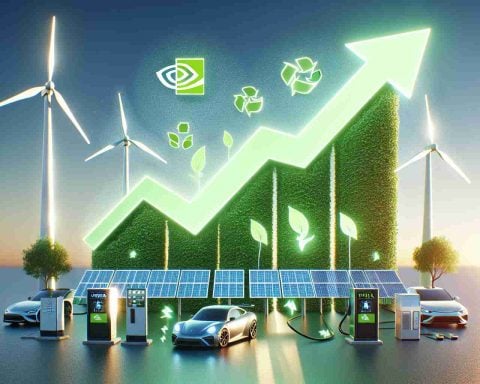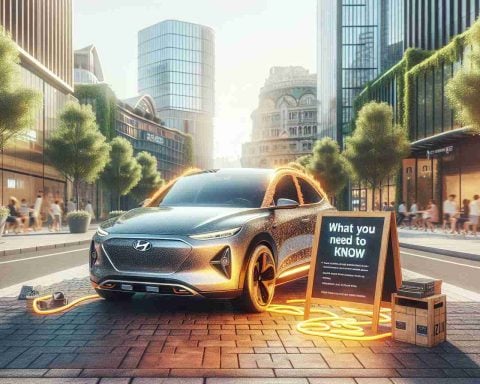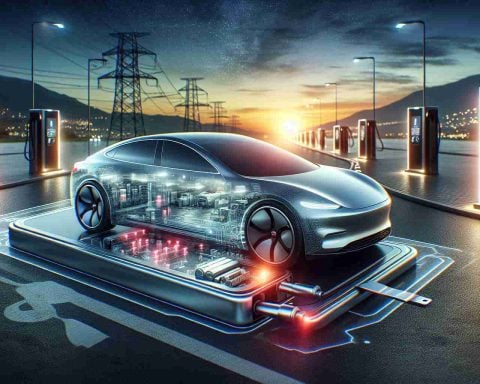- Australia is advancing sustainable transport with 250 EV charging stations in New South Wales, Victoria, and South Australia.
- The stations, designed and made domestically, will be installed on existing power poles and offer two charging plugs each, supporting 500 EVs simultaneously.
- Infrastructure focuses on accessibility, especially for urban residents with street parking, despite lacking rapid-charging capabilities.
- The Australian government aims to make EV charging as common as street lamps to boost EV adoption.
- Current BEV sales have slightly decreased, comprising 6.57% of new car sales, while hybrids have increased to 16.70% of the market.
- The initiative’s success lies in establishing a sustainable foundation for future urban development.
Glistening under the Southern Hemisphere sun, a new chapter unfolds in Australia’s commitment to sustainable transport. With a sweeping stroke of innovation and resolve, the federal government announced the installation of 250 electric vehicle (EV) charging stations across the picturesque roadsides of New South Wales, Victoria, and South Australia. Within two and a half years, these stations will breathe life into the nation’s ambitious shift toward renewable energy.
Each station, mounted onto existing power poles with meticulous precision, will feature two charging plugs, facilitating 500 EVs simultaneously. These are no ordinary infrastructure additions; they are domestically designed and manufactured masterpieces, symbolizing Australia’s ingenuity and self-reliance. While lacking the rapid-charging capabilities seen elsewhere, they are a crucial step toward widespread accessibility for folks without home charging setups, especially in densely populated urban sprawl where street parking reigns supreme.
The Labor-led government envisions a future where EV adoption accelerates as charging infrastructure becomes as ubiquitous as street lamps. For many Australians who cannot charge vehicles at home, these stands represent a gateway to cleaner, economically sensible mobility.
Yet the road to electrification presents its share of hurdles. Recent figures reveal a deceleration in battery electric vehicle (BEV) sales, now comprising just 6.57% of new passenger cars, down from 7.43% the previous year. In contrast, hybrids continue to gain traction, capturing 16.70% of the market.
The real triumph, however, lies not in immediate sales surges but in laying the groundwork for a sustainable future. As roadside chargers rise against the Australian sky, they herald a transformation poised to redefine how cities interact with the environment, one charge at a time.
Australia’s EV Revolution: Will New Charging Stations Power the Future?
How-To: Utilizing Australia’s New EV Charging Stations
To leverage the new charging stations effectively:
1. Download the App: Most EV networks offer mobile apps to find, reserve, and pay for charging sessions.
2. Locate a Station: Use the app to find the nearest charging station installed on power poles.
3. Connect and Charge: Simply plug your vehicle into one of the two available charging plugs.
4. Monitor Charging: Use the app to track charging progress and receive notifications when your vehicle is fully charged.
Pros and Cons
Pros:
– Accessibility: Greater access for those without home charging capabilities, particularly in urban areas.
– National Innovation: Australian-designed and manufactured brings economic benefits and local expertise.
– Environmental Impact: Supports the transition to renewable energy, reducing reliance on fossil fuels.
Cons:
– Charging Speed: Lacks rapid-charging capabilities, which may inconvenience drivers needing quick turnarounds.
– Market Adoption: The deceleration in BEV sales may affect overall utilization rates.
Market Forecasts and Trends
While BEV sales in Australia have decelerated recently, the installation of widespread charging infrastructure could spark renewed interest. As convenience grows, forecasts suggest potential upticks in EV adoption aligning with global trends toward electrification.
Reviews and User Feedback
Initial reviews from users in areas with high street parking point to heightened enthusiasm, appreciating the initiative for making EV charging more accessible. However, feedback often mentions the need for faster charging options to meet various lifestyle needs.
Comparisons and Features
Compared to other countries, Australia’s approach to integrating EV chargers onto power poles is unique. This method reduces the need for new infrastructure space and enhances urban landscapes without significant visual disruption.
Use Cases and Limitations
These charging stations benefit urban residents lacking home charging, visitors, or commuters. However, they may not meet the demands of high-travel individuals needing faster charging capabilities or those in rural areas.
Pricing Insights
While details on pricing per charge remain speculative, competitive pricing is expected to attract drivers from using more traditional fuels, aligning with broader economic goals to make EVs more affordable.
Compatibility and Specifications
The chargers are expected to support standard EV models compatible with dual plug types, accommodating a wide range of vehicles. However, without rapid charging, they primarily target users prioritizing convenience over speed.
Sustainability and Innovations
These chargers present a groundbreaking step toward sustainability by pairing existing infrastructures with modern renewable advancements. Innovations such as solar integration or smart grid connections could be explored in future phases.
Predictions
The grower coverage of charging infrastructure is likely to drive policy adjustments, increased battery research, and potential shifts in consumer behavior, positioning Australia as a key player in the EV market.
Security Aspects
Ensuring the safety of electric vehicle charging comes with risks such as weather-related issues. Domestic manufacturing implies better control over quality standards and safety regulations.
Related Links
For further insights and up-to-date information on electric vehicles and sustainability in Australia:
– EVenergi
– AREMAustralia



















